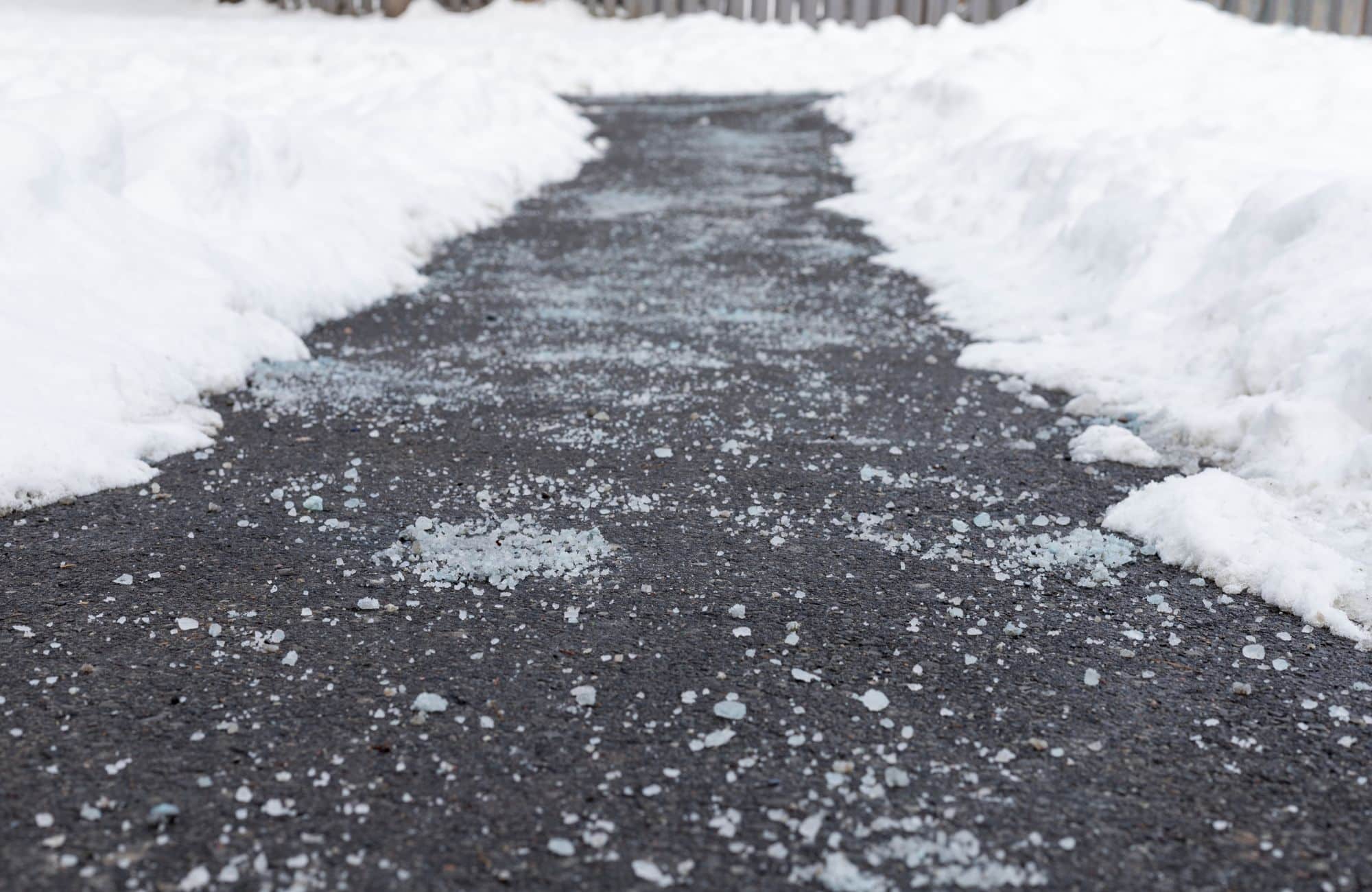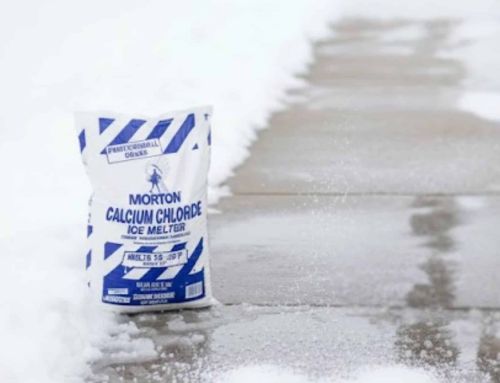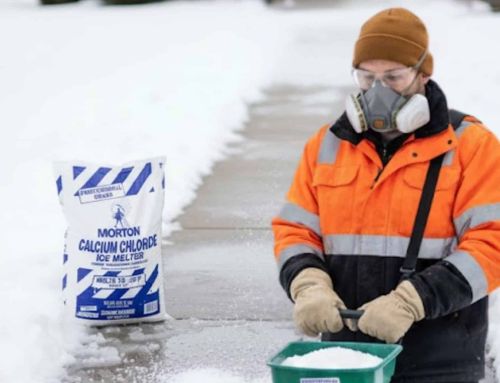Winter weather brings challenges, especially when managing icy surfaces and dealing with snow and ice. Whether you’re clearing driveways, walkways, or roadways, snow melt, particularly ice melt salt, is a common solution. Salt works by lowering the freezing point of water, breaking down ice, and preventing further accumulation. There are various ice melt products, and it’s important to understand how they function. You must also consider whether they are the best option for your specific needs, especially in harsh conditions.
In this article, we’ll explore how ice melt salt works, different types of ice melter, and their effectiveness in various temperatures. We’ll discuss the environmental impact of snow melt products, as they can harm vegetation and water systems. Additionally, we’ll guide you on choosing the right product based on temperature, surface type, and environmental concerns. This ensures your winter surfaces remain safe and manageable. For high-quality ice melt solutions, Old Station Outdoor & Landscape Supply offers products prioritizing performance and environmental responsibility.
How Does Ice Melt Salt Work?
Ice melt salt works by lowering the freezing point of water through freezing point depression. When salt is spread over ice, it dissolves and creates a brine solution. This prevents the ice from refreezing at its normal temperature. This accelerates the melting process and works quickly, even below 32°F (0°C). Salt is most effective in temperatures above 20°F, and its effectiveness decreases as temperatures drop.
While salt is common for melting ice, it’s not the only option. Other ice melters, like magnesium chloride and calcium chloride, are more effective in colder conditions. They work at lower temperatures than sodium chloride. Some of these compounds are fast-acting and provide quicker ice removal. They are better suited for extreme cold and offer a more efficient deicing solution.
Types of Ice Melt Products
When choosing an ice melt, it’s essential to understand the different types available. In addition to traditional granular products, liquid ice melt offers fast-acting performance and easy application. Each product varies in effectiveness, cost, and environmental impact. It’s important to consider ice melt safe options that are gentle on pets, plants, and concrete. Old Station Outdoor & Landscape Supply in Norton, Massachusetts, offers a wide range of ice melt products. These are tailored to various needs. Let’s take a closer look at the most common options, including pet-friendly ice melt products.
Sodium Chloride (Rock Salt)
Sodium chloride, commonly known as rock salt, is the most widely used ice melt product. It’s affordable and readily available, making it the go-to choice. Sodium chloride is often called ‘sidewalk salt’ or ‘driveway salt.’ This is because it’s commonly used for clearing snow and ice from sidewalks and driveways. Rock salt is sold in various bag sizes, offering convenience for different needs. However, it has some drawbacks. Sodium chloride is effective at temperatures above 20°F, but its effectiveness diminishes as temperatures drop. Additionally, it can harm concrete surfaces and vegetation if used excessively.
Calcium Chloride
Calcium chloride works at much lower temperatures than sodium chloride, thus making it ideal for extremely cold conditions. It can melt ice at temperatures as low as -25°F, far colder than sodium chloride. However, calcium chloride is more expensive and can be rough on surfaces if not applied properly. It’s also a highly exothermic compound, meaning it generates heat when dissolving in water. This speeds up the melting process.
Magnesium Chloride
Magnesium chloride is often marketed as a more environmentally friendly alternative to traditional rock salt. It works in temperatures as low as -13°F, which is lower than sodium chloride but not as low as calcium chloride. It’s less damaging to plants and concrete, which makes it a good option for those concerned about environmental impact. However, it can be pricier than sodium chloride, and while it’s less harmful to vegetation, it still requires proper use to avoid damage.
Pet-Safe Ice Melt
Pet-safe ice melt products are designed to be safer for pets’ paws and the environment. These products usually use calcium magnesium acetate (CMA), which is non-toxic to pets. It is less harmful to plants and concrete than traditional salts. While these are great for homes with pets, they tend to be more expensive. Additionally, they may not work as quickly or efficiently as other products.
Environmental Impact of Ice Melt Salt
While ice melt salt is effective for managing winter ice, it’s not without environmental consequences. It’s important to protect water quality from chemical runoff caused by improper ice melt practices. Careful selection of ice melt products is needed to minimize environmental impact. Here are some of the main concerns:
Using nitrogen and phosphorus-based fertilizers as ice melt is especially harmful, even in winter. These substances can contaminate water resources. Snow and ice threats can persist throughout the year, especially from January through March. Readiness and safety are important during this period.
Soil and Plant Damage
Excessive use of ice melt products, especially sodium chloride, can harm vegetation. Salt can leach into the soil and reduce the ability of plants to absorb water and nutrients. Over time, this can lead to the degradation of plant health and soil quality. Certain ice melts, like magnesium chloride, are less damaging to vegetation but still need to be used sparingly.
Water Contamination
As ice melts, salt dissolves, and it can run off into nearby water systems, causing contamination. The high salt concentration can affect freshwater ecosystems, harming aquatic life. This is particularly problematic in areas near lakes, rivers, or wetlands. If not managed properly, ice melt runoff can cause long-term damage to water quality and the animals that rely on these ecosystems.
Corrosion of Concrete and Metal
Salt can cause damage to concrete and metal surfaces. It can accelerate the corrosion of metal parts and cause concrete to deteriorate faster. This is a particular concern in regions that use a lot of salt on roadways and sidewalks. Choosing the right type of ice melt can help mitigate some of this damage, with alternatives like magnesium chloride being less harsh on surfaces than traditional rock salt.
Safer Alternatives
In response to the environmental concerns with traditional ice melt salt, eco-friendly options are now available. These include sand, which provides traction without environmental impact, and plant-based products like calcium magnesium acetate (CMA). While these products may not work as quickly or effectively as salt-based options, they offer a safer alternative for areas with sensitive environments.
How to Choose the Right Ice Melt Salt
With so many ice melt options available, how do you know which one is best for your needs? For best results and optimal results, proper application techniques are essential to maximize melting performance. Here are some key factors to consider when choosing an ice melt product:
- Temperature: The first factor to consider is the temperature at which you’ll be using the ice melt. Sodium chloride is effective above 20°F, while calcium chloride works at much lower temperatures, down to -25°F. If you live in an area with extremely cold winters, you may need to opt for calcium chloride or magnesium chloride.
- Surface Type: Different surfaces require different types of ice melt. The location where you plan to use the ice melt, such as driveways, sidewalks, or commercial areas, should influence your choice. If you’re dealing with concrete or asphalt, using rock salt can cause long-term damage. In these cases, products like magnesium chloride or pet-safe ice melts are safer alternatives.
- Environmental Impact: If you’re concerned about the environmental effects of traditional ice melt, consider using eco-friendly alternatives like CMA-based ice melts or sand. These options are gentler on vegetation and waterways.
- Cost: Cost is always an important factor when choosing an ice melt product. Sodium chloride is the most cost-effective, while calcium chloride and magnesium chloride tend to be more expensive. Weigh the effectiveness of the product against your budget to find the right balance.
Using the right ice melt product ensures safe access to your property by reducing slip hazards and maintaining clear walkways. For your convenience, ice melt salt can be ordered online, with fast delivery directly to your home. If you require larger quantities, bulk options such as a pallet are available to meet commercial or extensive residential needs.
Conclusion
Ice melt salt is an essential tool for managing icy surfaces during winter. Whether you’re dealing with sidewalks, driveways, or roads, selecting the right product can make a significant difference. Consider factors like temperature, surface type, environmental impact, and cost to make the best choice for your needs.
Ensure your property stays safe and accessible this winter with premium ice melt products from Old Station Outdoor & Landscape Supply. Our expert team is here to guide you in choosing the perfect solution tailored to your needs, whether for residential or commercial properties. Plus, we offer fast delivery straight to your door, so you can start deicing without delay. Contact us now and take advantage of our top-quality ice melt products to protect your surfaces and keep your walkways safe all winter long!
FAQs
Why does salt melt ice?
Salt melts ice by lowering the freezing point of water, a process known as freezing point depression. When salt is applied to ice, it dissolves and creates a brine solution that prevents the ice from refreezing at its normal temperature. This accelerates the melting process, even when the temperature is below 32°F (0°C).
Can table salt melt ice?
Yes, table salt (sodium chloride) can melt ice, but it’s most effective when temperatures are above 20°F. When sprinkled over ice, it dissolves and creates a brine solution that helps break down the ice. However, it becomes less effective in extremely cold conditions.
How does salt melt ice?
Salt melts ice by dissolving in the thin layer of water on the surface of the ice, lowering its freezing point. This prevents the water from refreezing, causing the ice to gradually melt even at sub-zero temperatures. The brine solution that forms helps accelerate the melting process.
Will normal salt melt ice?
Normal salt, such as sodium chloride, can melt snow and ice, especially in temperatures above 20°F. It works by lowering the freezing point of water, causing the ice to melt. However, in very cold temperatures, its effectiveness decreases, and other compounds may be needed for better results.










